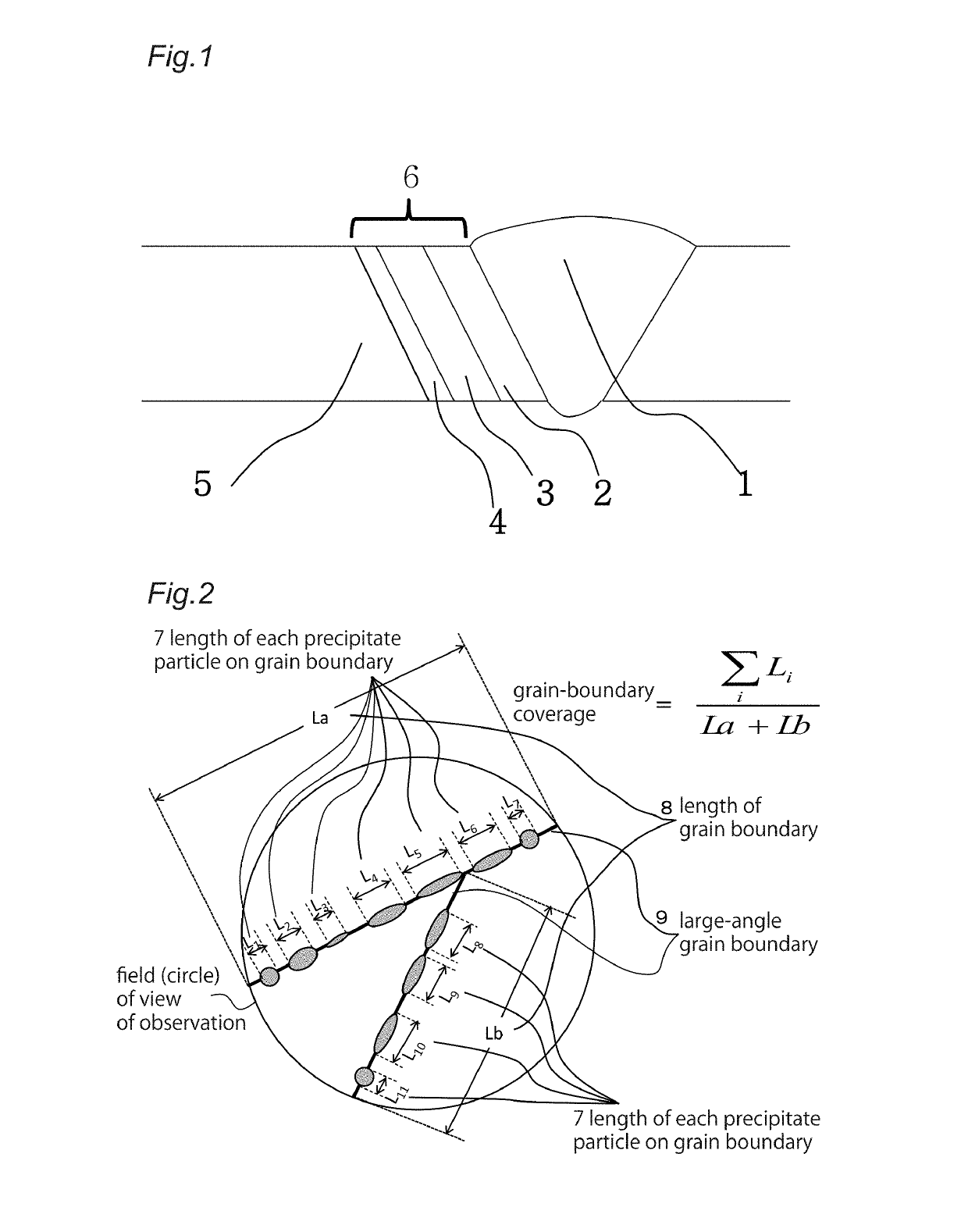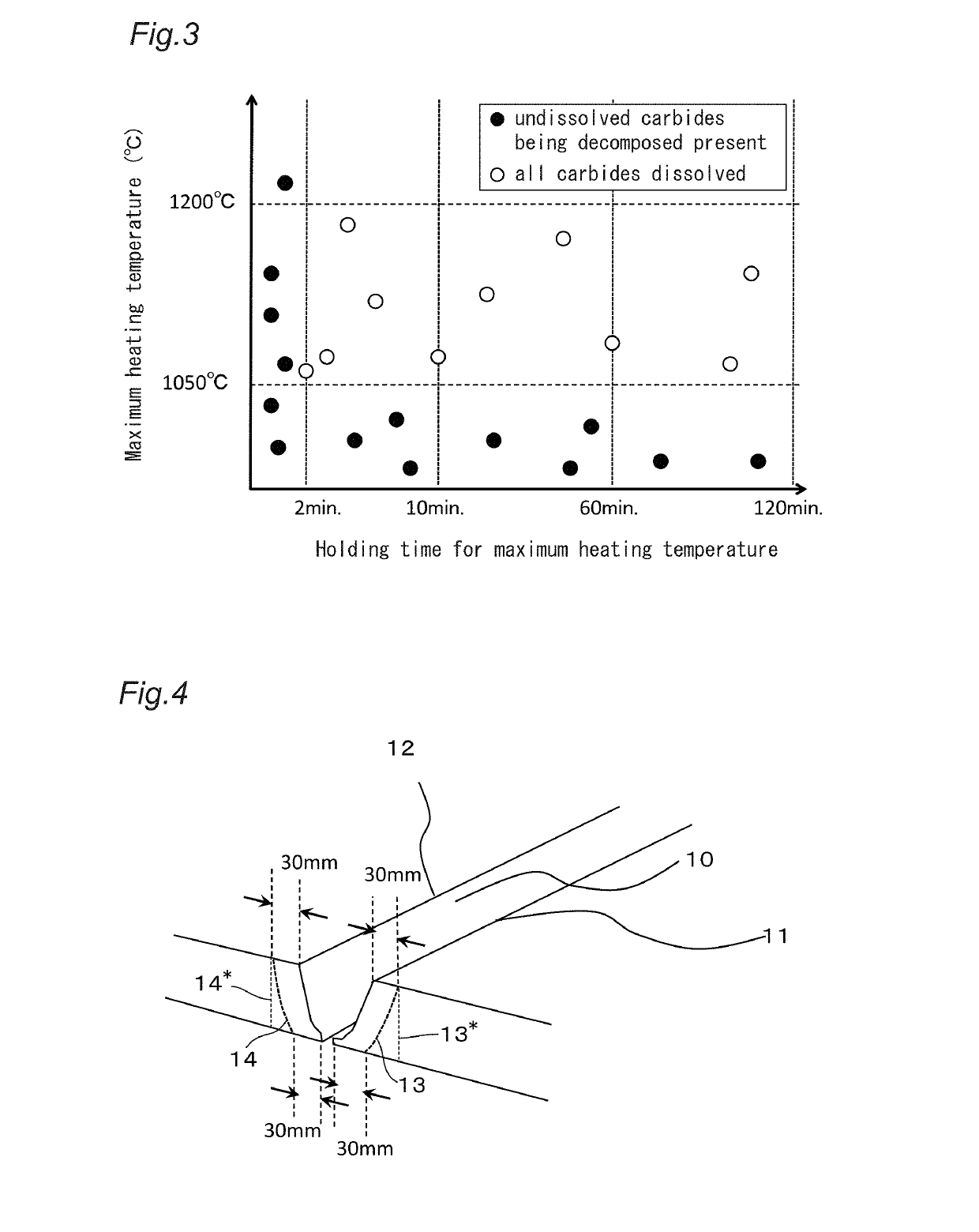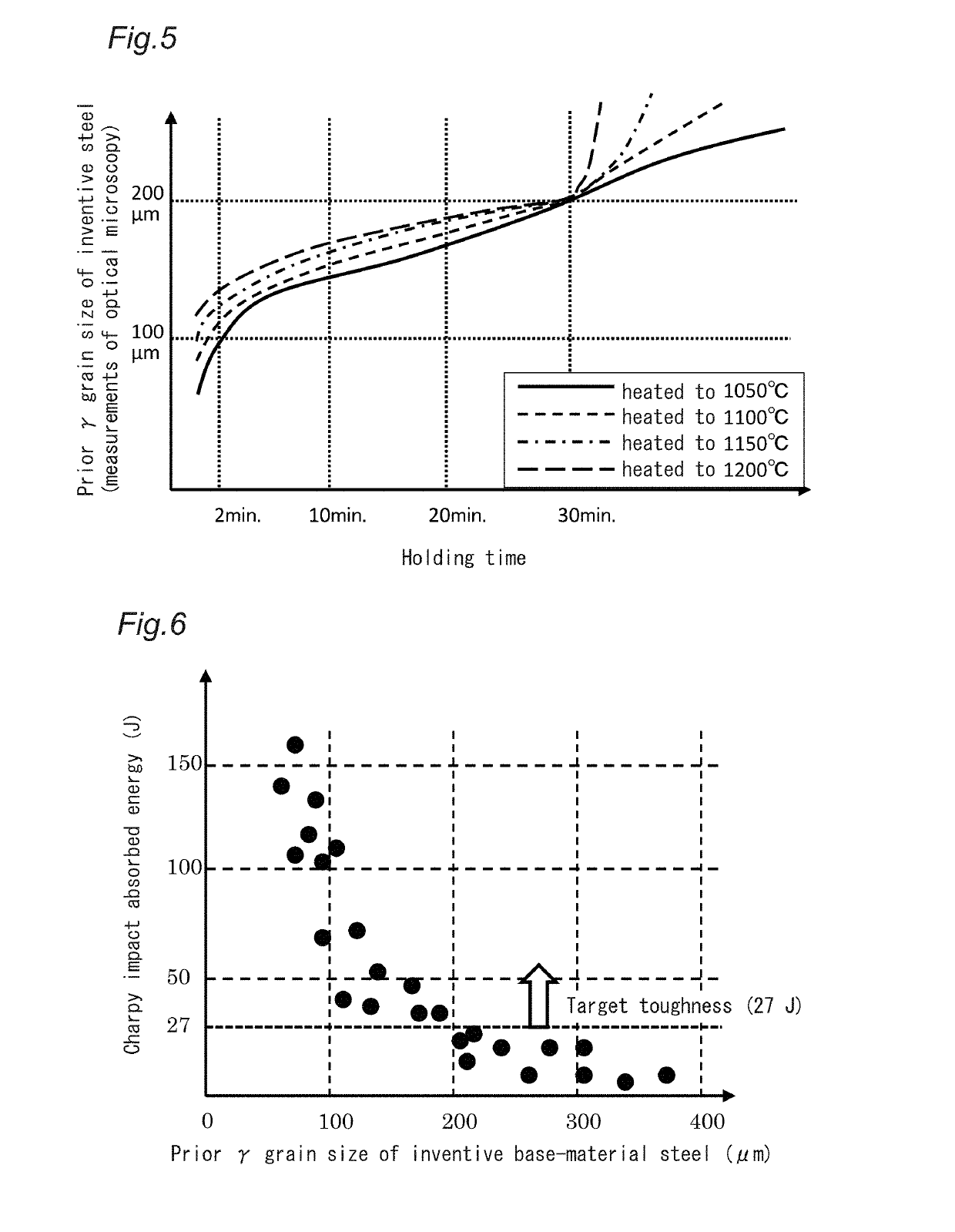However, it is difficult to supply
renewable energy on a commercial basis in a massive and stable manner, and spreading the supply of such energy presupposes techniques for reducing costs or techniques for storing energy.
On the other hand, problems with these conventional power-generation techniques include resource life and large environmental
impact; particularly, CO2 emissions need to be reduced at the same time, which is an urgent problem.
Further, toxic substances contained in
fossil fuel, which is a major power source of vehicles, especially
sulfur oxides such as SOx, are likely to be subjected to ever stricter regulations, and it is desired that oil refining reactors, which are intended to solve this problem, operate at higher temperatures and under higher pressures than conventional levels.
Furthermore, in oil refining reactors, problems presented in connection with future base materials include improving high-temperature
corrosion resistance, for which demand is likely to be higher, and obtaining high-temperature strength, which is required by the nature as a pressure container.
However, the atomic structure of iron is BCC (body-centered cubic lattice) and thus has a higher
lattice constant, which causes substances to diffuse quickly at high temperatures.
Thus, to provide durability for a prolonged period of time, it is physically and chemically unavoidable that ferritic heat-resistant steels are inferior to austenitic heat-resistant steels.
A problem with the use of ferritic heat-resistant steel for a prolonged period of time at high temperatures is that its
creep strength is lower than that of austenitic heat-resistant steel and, in addition, it is very difficult to prevent production of portions with lower
creep strengths, which are locally found in the weld heat-affected zone of a welded joint.
Such a Type IV damage in a welded structure made of ferritic heat-resistant steel has not been resolved, and attempts have recently been made to resolve this problem.
Type IV damage is a fracture specific to a welded joint, where, even though the base material is under time and temperature conditions that allow good use in a
creep environment, only the welded joint suffers creep deformation, leading to a fracture.
Such Type IV damage is thought to be unavoidable in all commercialized ferritic heat-resistant steel, and various discussions about the mechanism in which it occurs have been made.
However, especially in the fine-grain HAZ, several dozens of percent of carbides that were present as coarse precipitates remain undissolved, though they shrink.
This is thought to be the major cause of Type IV damage.
The carbides that have remained undissolved are coarsened by the
thermal cycle as a result and, at the same time, reduce the opportunity for
precipitation of fine carbides.
This demonstrates that Type IV damage is unavoidable in a heat-resistant steel that has a transformation point as discussed above and in which carbon is contained and carbides are precipitated to increase creep rupture strength.
That is, Type IV damage may occur in any steel type that is a heat-resistant steel in which carbides are used to increase creep strength, and is particularly significant in a high-Cr steel that is designed presupposing a prolonged use at high temperatures.
Of course, Type IV damage remains as an unavoidable problem in thermal power plants in which such a steel is used at a high temperature of 500° C. or higher.
Since there is practically no ferritic heat-resistant steel that does not use the
precipitation strengthening property derived from carbides to increase creep strength and exactly the same phenomenon occurs even when carbon is replaced by
nitride, it is very difficult to prevent Type IV damage in a ferritic heat-resistant steel.
However, these hypotheses are not supported anymore because detailed research has shown that the fine-grain HAZ has strengths at
room temperature or high temperature that are higher than such strengths of the dual-phase HAZ or portions of the base material near the dual-phase HAZ (results of tensile tests for a short period of time, rather than creep strength).
Furthermore, while there has been no proof as to whether there is a reduction in
hardenability, now that precipitates are generally understood as the main strengthening factor predominant in creep strength for a long period of time, no grounds for the mechanism of creep
strength reduction caused by the nature of fine-grain
microstructure have been given based on that reasoning.
Therefore, the inventors concluded that, even when a HAZ in which no fine-grain HAZ is produced is created or a ferritic heat-resistant steel in which a fine-grain HAZ cannot easily be produced is presented, it is difficult to completely prevent Type IV damage unless the coarsening of carbides due to the HAZ
thermal cycle is not prevented.
This technique requires a furnace for performing heat treatment at high temperature on an entire member including an edge before
welding (a steel
pipe with a length of 10 m or longer in most cases), which makes on-site operation difficult.
Further, heating the entire steel
pipe may cause deformation of the product, i.e. steel
pipe, and reheating requires a long time and a large process load; for these reasons, this technique does not provide a realistic solution from a viewpoint of on-site operation.
The high-B containing steels described in JP 2009-293063 A and JP 2010-007094 A achieve prevention of production of a fine-grain region; however, in the portions corresponding to a fine-grain region, a short-time re-solution of carbides may cause
partial solution and re-
precipitation, during which coarsening of carbides occurs, a problem that these techniques cannot sufficiently solve.
However, for a longer time in creep environments, a reduction in the creep strength of the HAZ is unavoidable since coarsening of carbides has preceded.
The stabilization of
microstructure achieved by precipitates on grain boundaries is a new
hypothesis about strengthening proposed in recent years, and was thought to be ineffective for strengthening in the past, based on the assumption that even coarse precipitates on large-angle grain boundaries can help strengthening particularly during a very-long-time creep deformation longer than 100,000 hours because, in a creep deformation where large-angle grain boundaries may migrate after a long period of time, a series of coarse
carbide particles that are left after grain-boundary migration can serve as barriers that prevent
dislocation motion.
However, this requires an even larger furnace than the heat treatment furnace described in JP 2008-214753 A, for example, which means low on-site
operability.
Further, in a
weld metal, the
alloy composition is originally decided such that the creep strength is at its maximum when the cast
microstructure that is welded is, without an interruption, subjected to a post-weld heat treatment at a lower temperature than the
tempering temperature; thus, a typical
weld metal is not designed to provide strength after a refining process including normalizing and
tempering, similar to the process for the base material.
As a result, the joint develops a rupture beginning at the weld
metal due to a reduction in the creep strength of the weld
metal, a factor different from Type IV damage, such that creep strength of the weld joint is not achieved.
That is, techniques such as that of JP 2001-003120 A is incomplete to address Type IV damage.
These techniques use a microstructure
memory effect using retained γ that is present on
lath boundaries, which are significant in B-containing steel; however, retained γ, however in a small amount, may remain in the base material or portions that have been subjected to a pre-weld heat treatment, and thus
toughness tends to be low.
Further, a technique for preventing Type IV damage taking account of economy and on-site
operability has not been proposed for ferritic heat-resistant steel containing only 50 ppm or less B.
 Login to View More
Login to View More 


